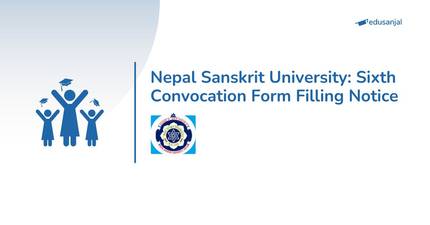Virtually unknown to the public, Nepal’s National Library is housed in a crumbling Rana palace where half a dozen other government offices are located. After climbing up the rickety wooden stairs of Harihar Bhawan, and reaching its first floor, a hand-painted signage directs visitors through a long hallway which ends at the library’s entrance.
The dark, shaded reception opens to long rooms in different directions. Each room is filled with wooden and metallic cases and cupboards stuffed with books.
The ceiling of the English section of the library has a blue tarpaulin hung over it, and the books are dusty and the walls are damp.
The microfilm department is locked; the Sanskrit section has no visitors. Sharad Chandra Acharya, the in charge of the Sanskrit section, is engrossed in a book.
“Mostly, the students of Balmiki Sanskrit Campus visit this section of the library,” he looks up. “The section has 6,000 books. Some are more than a 100 years old.”
These old texts, also known as “Patre Kitab” are wrapped in white cotton sheets and piled up inside and above wooden cupboards. “They are purans and have been locked inside cupboards in cotton sheets to protect them from dust, heat and mice.”

According to Dashrath Thapa, the Nepal National Library’s recently retired chief librarian, the library boasts a collection of 90,000 books. Its annual budget is seven million Rupees and each year a substantial amount of books are added to its collection.
“The library has books in different languages, like Urdu, Newari and Marathi but we haven’t been able to catalogue them all because of the language barrier,” Thapa admits.
Dozens of books, newspapers and journals are stacked haphazardly in the computer and periodical section. Blue registers marked with the names of newspapers have been pulled out of their metallic cases and left as it is.
“Some 30 individuals visit us everyday,” says Thapa. The admission register mentions 28 individuals as having entered the library that particular day and most appear to be busy in the newspapers section. The library subscribes to 15 dailies, 38 weeklies and 16 monthlies.
“I believe our location to be our biggest shortcoming,” adds Thapa. “According to the concept of a city library, it should be located within ten minutes of walk from the nearest public transportation stop, or ten minutes by walking. But the library is out of the reach of the public.”
The library is open from 10 am to 5pm, from Sunday to Friday, and books cannot be borrowed from the library and there is no provision for membership.
The children’s section, on the other hand, although publicized as being open seven days a week in the library’s pamphlet, is closed on Saturdays.
Bhagirathi Adhikari, in charge of the children’s section, shares her discontent with the library administration.
“We started the children’s section on the occasion of Children’s Day in 2052 BS [some 16 years ago]. For two years, I came and opened the library on Saturdays as well, but I received no incentives and now the library is closed on holidays, too.”
The children’s section was shifted down to the ground floor of Harihar Bhawan in 2059 BS.
“This was previously a horse stable and we renovated it,” says Adhikari. But the hall is still damp and the roof often leaks. “I’ve counted 16 places from where the water leaks,” she adds.
“Once the roof of the English section also broke down, and we lost 1,000 English books,” informs Thapa.
In his initiative, the library contacted the Health Ministry located in Maitighar to buy a piece of land located in its premise. But the cost was too high and the library couldn’t afford it.
Before shifting to Harihar Bhawan, the library was located in Singha Durbar where it was merged with the Central Secretariat Library.
The journey of the library however began in 2013 BS {arounf 1957} when the then government bought the private book collection of the late Hem Raj Pandey, the then king’s spiritual preceptor, and turned it into the National Library.
Yet, with its rich heritage, the library is still seeking recognition.
“We even made a documentary about the library and broadcast it via Nepal Television, but there was no change in the number of visitors,” says a disheartened Thapa.
His hope is pinned on the next chief librarian who will be selected after taking the examinations conducted by the Public Service Commission (PSC). S/he should be someone young and vibrant who can transform the gloominess of the library into a thriving one.
One such thriving library is the popularly known “American Library” in Kathmandu, now housed inside the American Embassy at Maharaj Gunj.
Originally established as part of USIS (United States Information Service) in 1952 on New Road, the Library has now five branches in Bhairhawa, Pokhara, Biratnagar, Birgunj, and Dhangadi.
“These American Library corners serve as information outlets for the public seeking information about the United States. They have helped us publicize the library and reach out to interested readers outside the Kathmandu Valley,” says Navin Rayamajhi, reference librarian at the American Library.
“The library has 4,247 members till date and is visited by an average of 100 individuals everyday,” he informs. “Most of them are students in their 20s who come to use the vast online journals in our library for their thesis works.”
He credits the library’s online presence as one of the reasons for its popularity. “We don’t wait for people to come to us like traditional libraries; we go to our readers instead. Recently, we asked our readers through Facebook what American films they would like to watch in our film screening program and we decided on the films they chose,” he describes.
If the Nepal National Library, like the American Library, is to reach out to the public, it has to be financed well and relocated in a new place where the ceilings and walls don’t leak.
Nepal’s National Library should also not have any excuse to not own any book written about Nepal.
( Reproduced from: Myrepublica.com, Published on My Republica .com on 2011-06-24 10:42:56)












